Welcome to our latest post on planning the perfect hosta garden! In this guide, we’ll delve into the world of companion planting to help you make informed decisions about which plants to grow alongside your beloved hostas. Discover the best companion plants that complement hostas beautifully, enhancing their beauty and creating a harmonious garden landscape. We’ll also explore the not-so-ideal companions to avoid, ensuring your hostas thrive without competition or conflict. With valuable insights into each plant’s hardiness zones, light requirements, and watering needs, you’ll have all the tools you need to cultivate a thriving hosta garden that delights the senses and brings joy throughout the seasons. Let’s dive in and create the hosta garden of your dreams!
Table of Contents
Strategizing Your Hostas Garden’s Perfect Pairings
Selecting the best companion plants for hostas and avoiding plants that grow together with hostas will create a thriving hosta garden design.
While companion plants are selected to benefit each other and promote overall garden health, incompatible plants are those that may hinder the growth or well-being of neighboring plants due to competition for resources, allelopathic effects, or susceptibility to pests and diseases.
By being aware of both companion plants and incompatible plants, gardeners can make informed decisions when designing their garden layouts and selecting appropriate plant combinations to achieve a balanced and thriving garden ecosystem.
Plants to Keep Away from Your Hostas
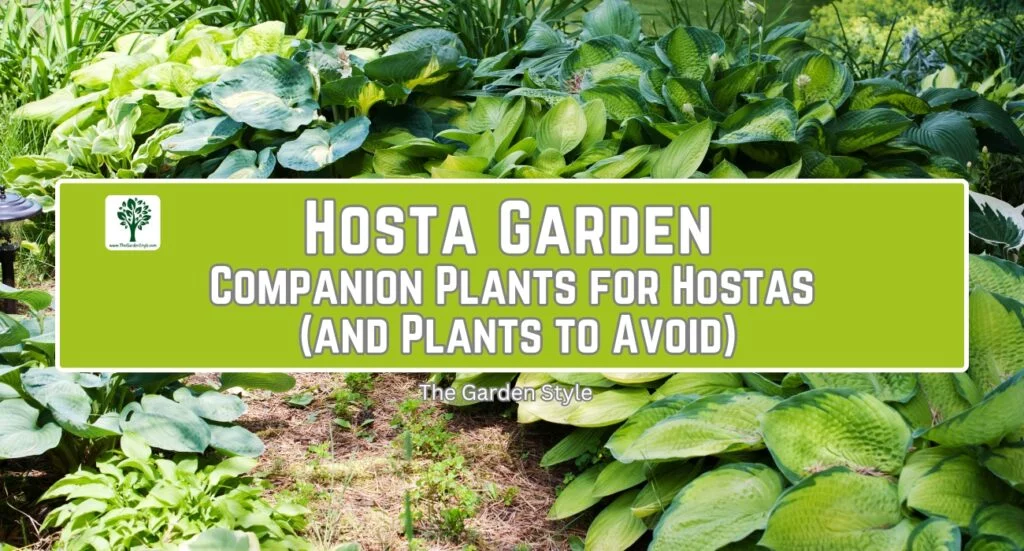
The group of plants that you should avoid planting near hostas could be referred to as “incompatible plants” or “unfavorable companions.” These are plants that may have conflicting requirements, aggressive growth habits, or negative impacts on the growth and health of hostas.
While hostas are generally adaptable and can thrive in various garden conditions, some plants may not be ideal companions due to differing requirements or potential competition for resources. Here are a few plants to avoid planting near hostas:
- Aggressive Spreaders: Plants that have invasive or aggressive spreading habits can compete with hostas for space, nutrients, and water, potentially overshadowing or overcrowding them. Examples include certain types of bamboo (Phyllostachys spp.), running varieties of mint (Mentha spp.), and aggressive ground covers like goutweed (Aegopodium podagraria) or bishop’s weed (Aegopodium podagraria).
- Heavy Feeders: Some plants have high nutrient requirements and may deplete soil nutrients more rapidly, which could negatively impact the growth and health of neighboring hostas. Avoid planting heavy feeders like tomatoes (Solanum lycopersicum), corn (Zea mays), or squash (Cucurbita spp.) too close to hostas, especially in nutrient-poor soils.
- Plants Prone to Pests or Diseases: Certain plants may attract pests or diseases that could affect the health of nearby hostas. For example, planting roses (Rosa spp.) near hostas could increase the risk of aphid infestations, while planting vegetables susceptible to fungal diseases, such as tomatoes or cucumbers, could potentially spread diseases to hostas.
- Plants with Allelopathic Effects: Some plants produce chemicals that inhibit the growth of other plants nearby, a phenomenon known as allelopathy. While not all plants with allelopathic properties are harmful to hostas, it’s generally advisable to avoid planting species known for their allelopathic effects, such as black walnut trees (Juglans nigra) or certain types of eucalyptus (Eucalyptus spp.), in close proximity to hostas.
- Tall or Sun-Loving Plants: Hostas typically prefer partial to full shade and may be overshadowed by taller or sun-loving plants if planted too closely together. Avoid planting tall perennials or shrubs that require full sun, such as peonies (Paeonia spp.) or daylilies (Hemerocallis spp.), near hostas, as they may compete for sunlight and create unfavorable growing conditions.
By being mindful of plant selection and spacing, you can create a harmonious garden environment where hostas can thrive alongside compatible companions without facing undue competition or challenges.
Recommended reading: How to Grow Hostas
Blooming Buddies: Best Companion Plants for Hostas
In this section, we’ll explore a diverse array of companion plants, from perennials to annuals, that complement hostas and provide essential growing tips to ensure their success.
Discover plants that thrive in similar light and moisture conditions, learn about their preferred USDA hardiness zones, and uncover expert advice on watering needs to create harmonious and thriving garden beds.
Let’s see how to grow a vibrant and balanced garden landscape alongside your beloved hostas.
Here’s the list of companion plants for hostas organized alphabetically:
Astilbe
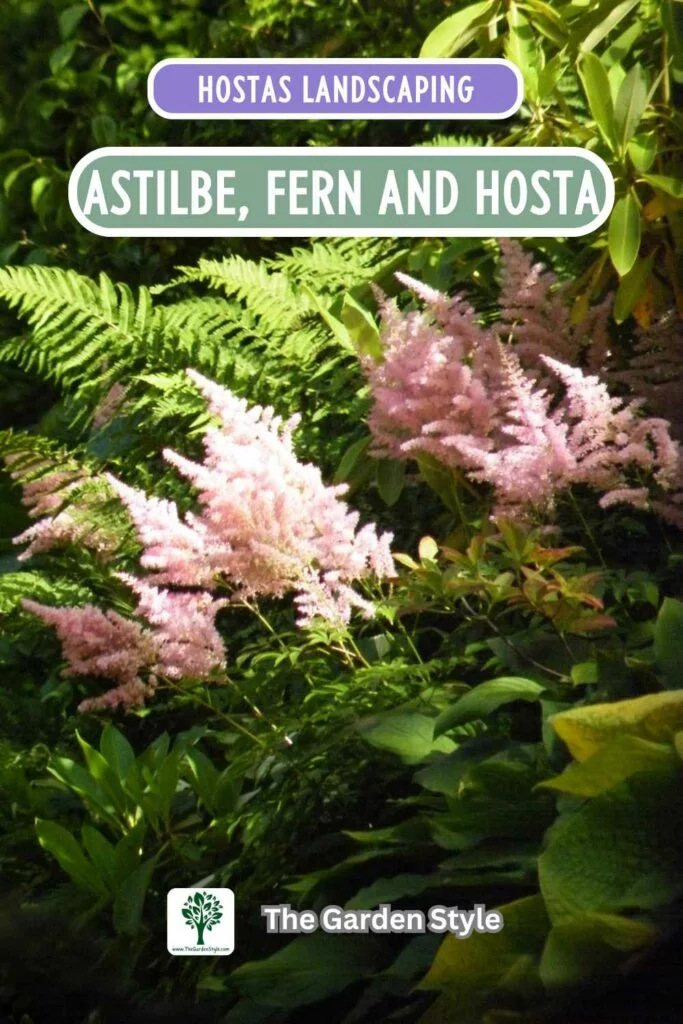
Astilbes produce feathery plumes of flowers in shades of pink, red, purple, and white, adding vertical interest to the garden while thriving in shady, moist conditions alongside hostas. Explore these incredible Astilbe arendsii ‘Fanal’.
- Plant Type: Perennial
- Preferred Location: Partial to full shade, in-ground
- Watering Needs: Keep soil consistently moist, especially during hot and dry periods.
- Expected Blooming: Late spring to early summer
- Suggested USDA Hardiness Zones: 4-9
Bleeding Hearts (Dicentra)
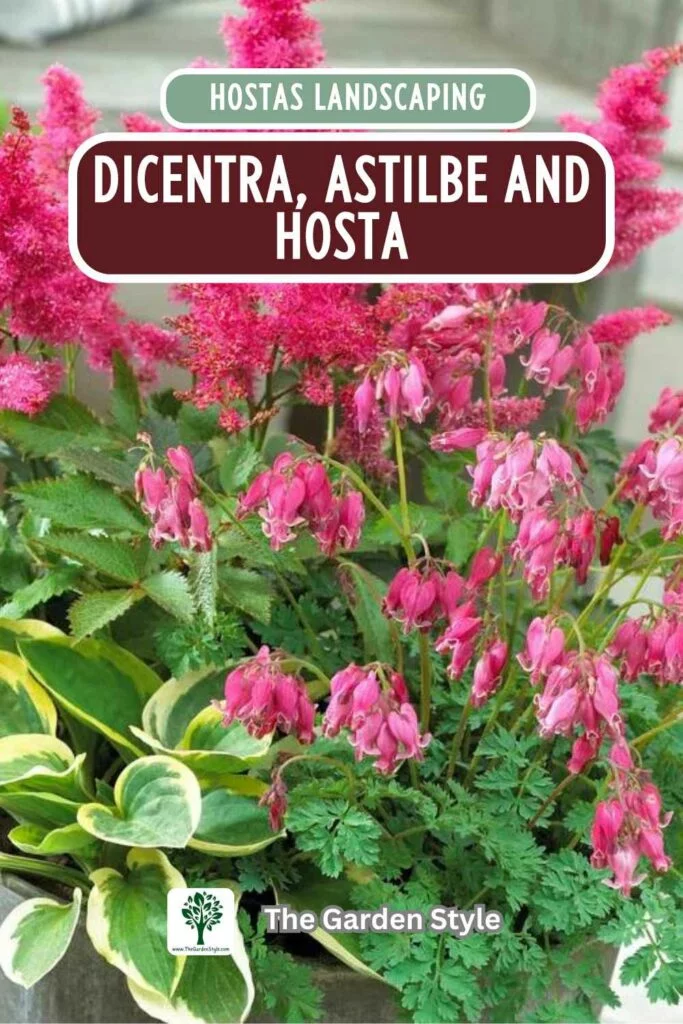
Bleeding hearts have delicate, heart-shaped flowers that hang from arching stems, providing a romantic touch to shady garden beds when planted alongside hostas.
- Plant Type: Perennial
- Preferred Location: Partial to full shade, in-ground
- Watering Needs: Keep soil consistently moist, especially during hot and dry periods.
- Expected Blooming: Spring to early summer
- Suggested USDA Hardiness Zones: 3-9
Recommended reading: +30 Shade Perennials: Plants and Flowers for a Stunning Garden
Brunnera
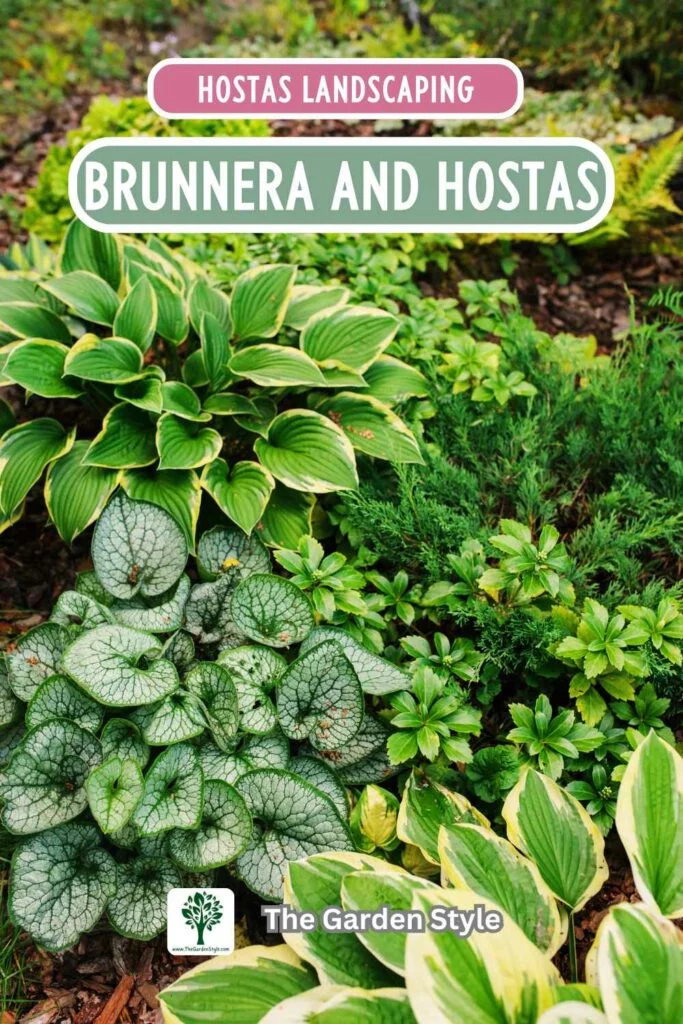
Brunneras have heart-shaped leaves and produce clusters of tiny blue flowers in spring. They thrive in shady, moist conditions and offer contrasting foliage textures alongside hostas. Take a look at these remarkable Brunnera plants.
- Plant Type: Perennial
- Preferred Location: Partial to full shade, in-ground
- Watering Needs: Keep soil consistently moist, especially during hot and dry periods.
- Expected Blooming: Spring
- Suggested USDA Hardiness Zones: 3-9
Creeping Jenny (Lysimachia nummularia)
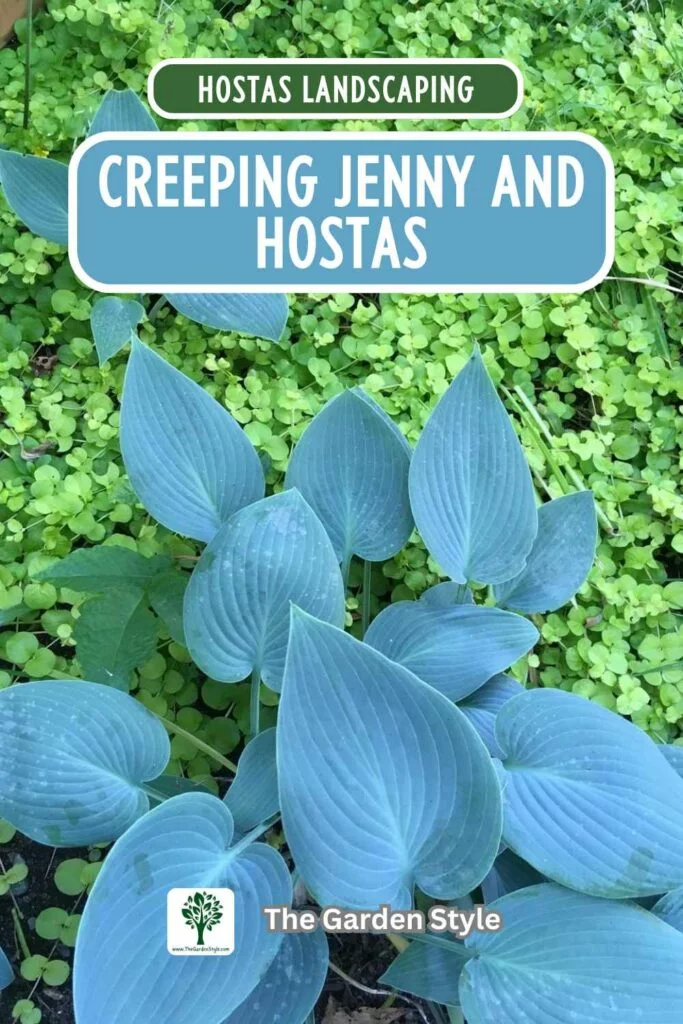
Creeping Jenny is a low-growing ground cover with vibrant chartreuse foliage that contrasts beautifully with the broad leaves of hostas. It adds a bright pop of color to shady areas and spreads slowly to fill in spaces. Explore these incredible Creeping Jenny plants.
- Plant Type: Perennial
- Preferred Location: Partial to full shade, in-ground
- Watering Needs: Keep soil consistently moist, especially during hot and dry periods.
- Expected Blooming: Spring to summer
- Suggested USDA Hardiness Zones: 3-9
Ferns
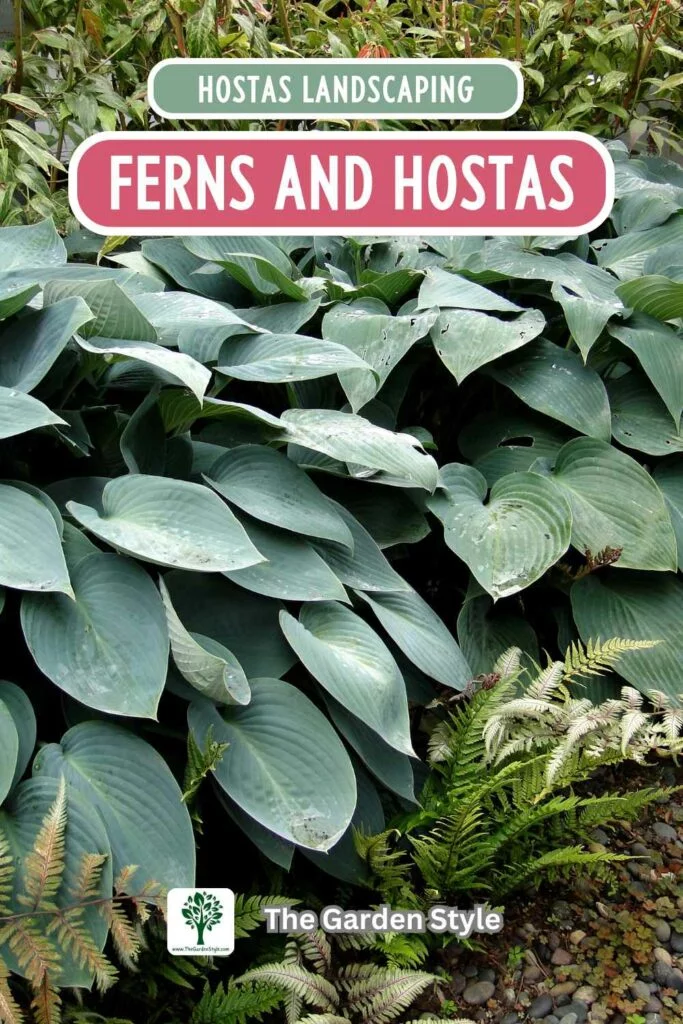
Ferns make fantastic companions for hostas as they thrive in similar shady, moist conditions. They offer contrasting textures and help create a lush woodland atmosphere. Take a look at these remarkable Boston ferns.
- Plant Type: Perennial
- Preferred Location: Partial to full shade, in-ground
- Watering Needs: Keep soil consistently moist, especially during hot and dry periods.
- Expected Blooming: N/A (Ferns do not produce flowers)
- Suggested USDA Hardiness Zones: Varies by species
Recommended reading: How to Propagate Ferns
Heuchera (Coral Bells)
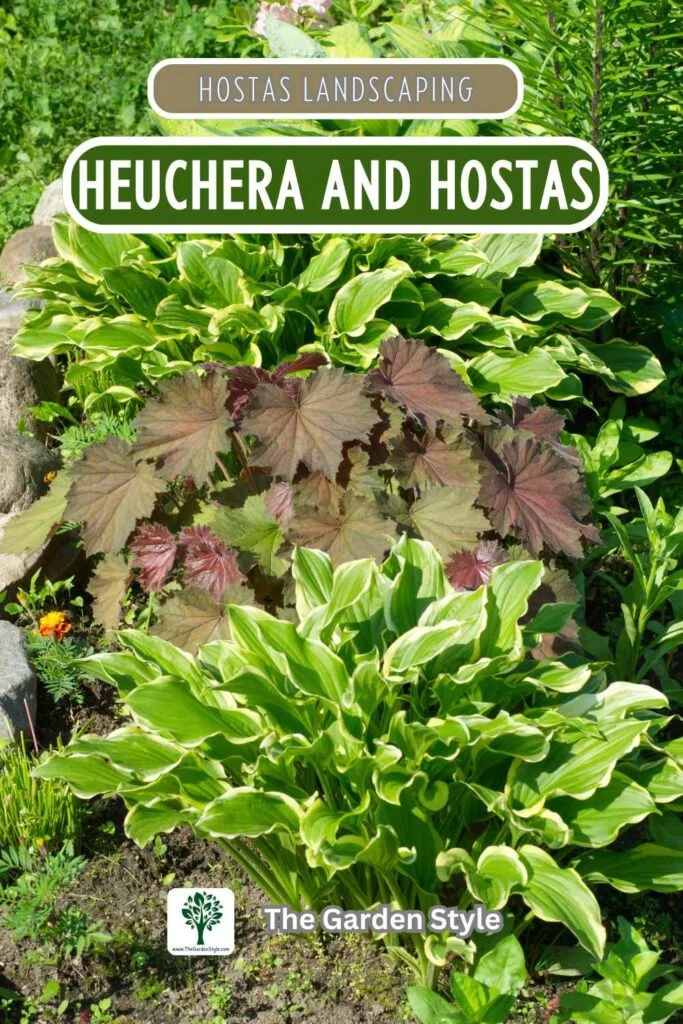
Heucheras come in a wide range of foliage colors, including shades of green, purple, silver, and bronze. These colors complement the lush foliage of hostas. Their delicate spikes of flowers add added interest. Explore these incredible Heuchera plants.
- Plant Type: Perennial
- Preferred Location: Partial shade to full shade, in-ground or container gardening
- Watering Needs: Keep soil consistently moist, especially during hot and dry periods.
- Expected Blooming: Spring to summer
- Suggested USDA Hardiness Zones: 4-9
Hydrangea
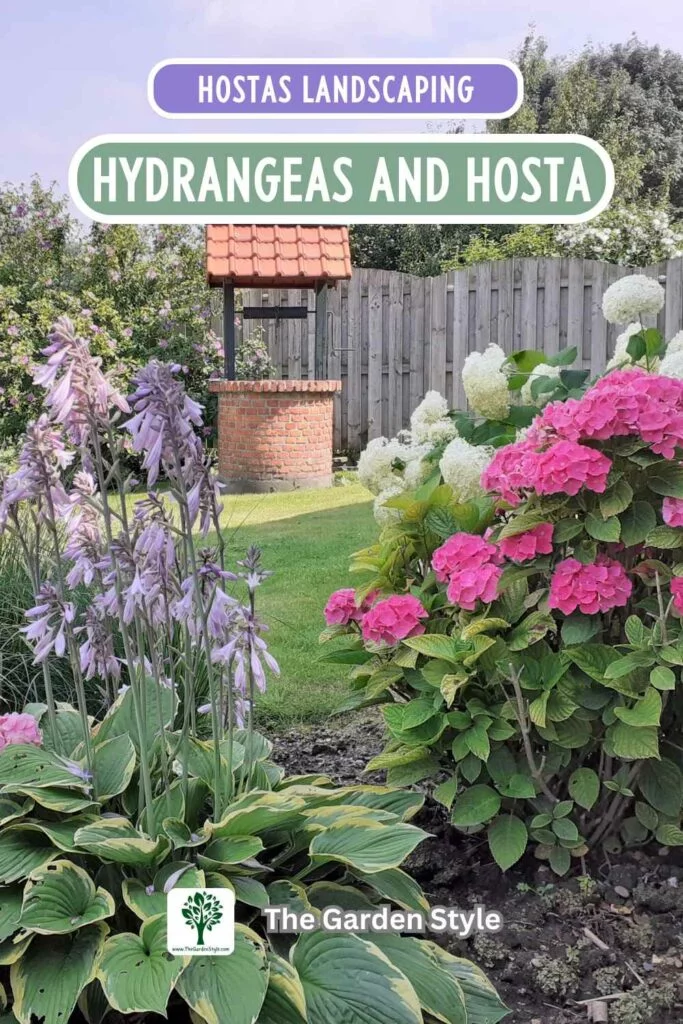
Hydrangeas are ideal companions for hostas, enhancing the charm of any garden with their complementary textures and colors.
- Plant Type: Perennial
- Preferred Location: Partial shade to full shade; in-ground planting recommended
- Watering Needs: Keep soil consistently moist but not waterlogged; mulching helps retain moisture.
- Expected Blooming: Summer to fall, depending on the variety
- Suggested USDA Hardiness Zones: Zones 3 to 9, depending on the hydrangea variety
Jacob’s Ladder (Polemonium caeruleum)
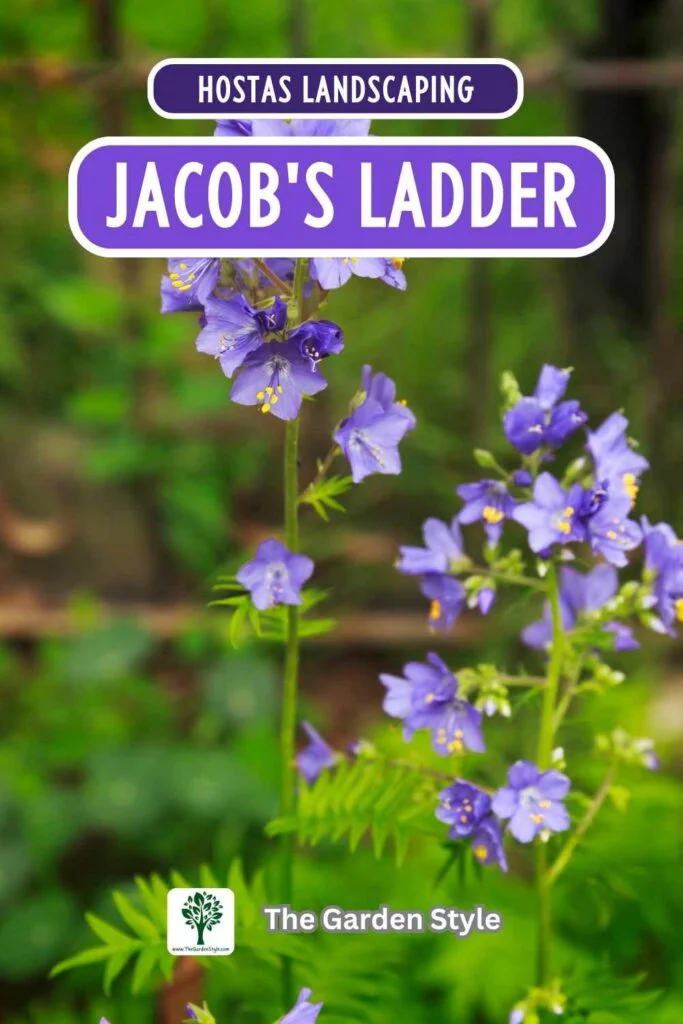
Jacob’s ladder produces delicate clusters of blue, pink, or white flowers atop fern-like foliage. It adds vertical interest to shady areas and complements the texture of hosta leaves.
- Plant Type: Perennial
- Preferred Location: Partial to full shade, in-ground
- Watering Needs: Keep soil consistently moist, especially during hot and dry periods.
- Expected Blooming: Late spring to early summer
- Suggested USDA Hardiness Zones: 3-7
Japanese Painted Fern (Athyrium niponicum)
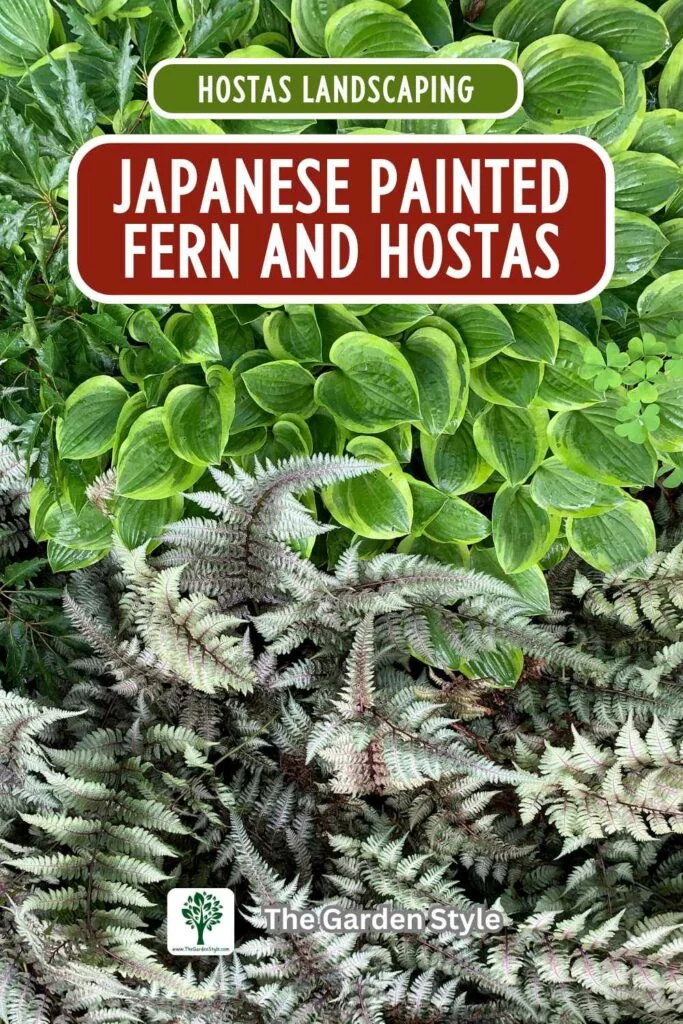
Japanese-painted ferns have striking, variegated foliage in shades of silver, green, and burgundy. They thrive in shady, moist conditions and provide a dramatic backdrop for hostas. Take a look at these Japanese-painted ferns.
- Plant Type: Perennial
- Preferred Location: Partial to full shade, in-ground
- Watering Needs: Keep soil consistently moist, especially during hot and dry periods.
- Expected Blooming: N/A (Ferns do not produce flowers)
- Suggested USDA Hardiness Zones: 4-8
Lady’s Mantle (Alchemilla mollis)
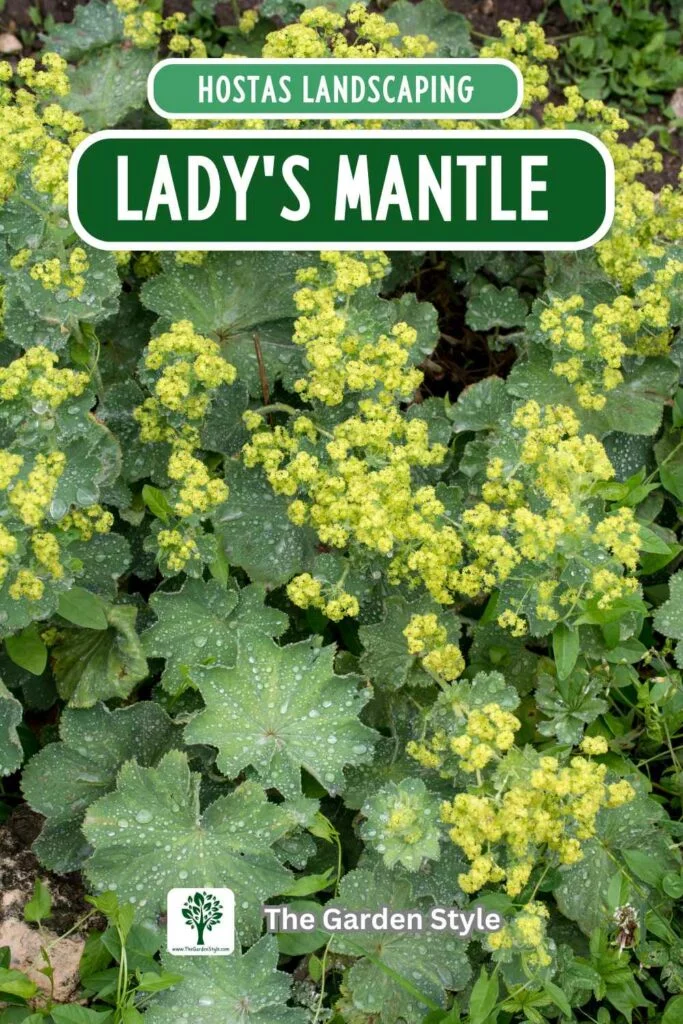
Lady’s mantle has attractive, pleated leaves and sprays of tiny, chartreuse flowers. It adds texture and interest to shady borders and complements the lush foliage of hostas.
- Plant Type: Perennial
- Preferred Location: Partial to full shade, in-ground
- Watering Needs: Keep soil consistently moist, especially during hot and dry periods.
- Expected Blooming: Late spring to early summer
- Suggested USDA Hardiness Zones: 3-8
Lungwort (Pulmonaria)
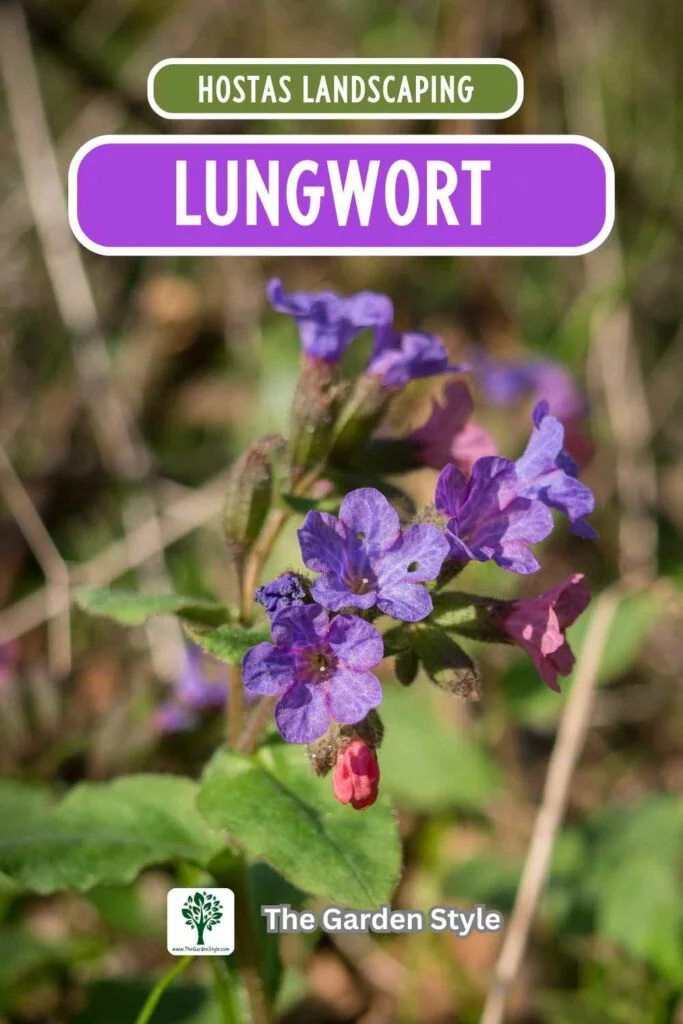
Lungwort plants have attractive silver-spotted leaves and produce clusters of blue, pink, or white flowers in early spring, providing color and interest to the shady garden when hostas are just emerging.
- Plant Type: Perennial
- Preferred Location: Partial to full shade, in-ground
- Watering Needs: Keep soil consistently moist, especially during hot and dry periods.
- Expected Blooming: Early spring to early summer
- Suggested USDA Hardiness Zones: 3-8
Solomon’s Seal (Polygonatum)
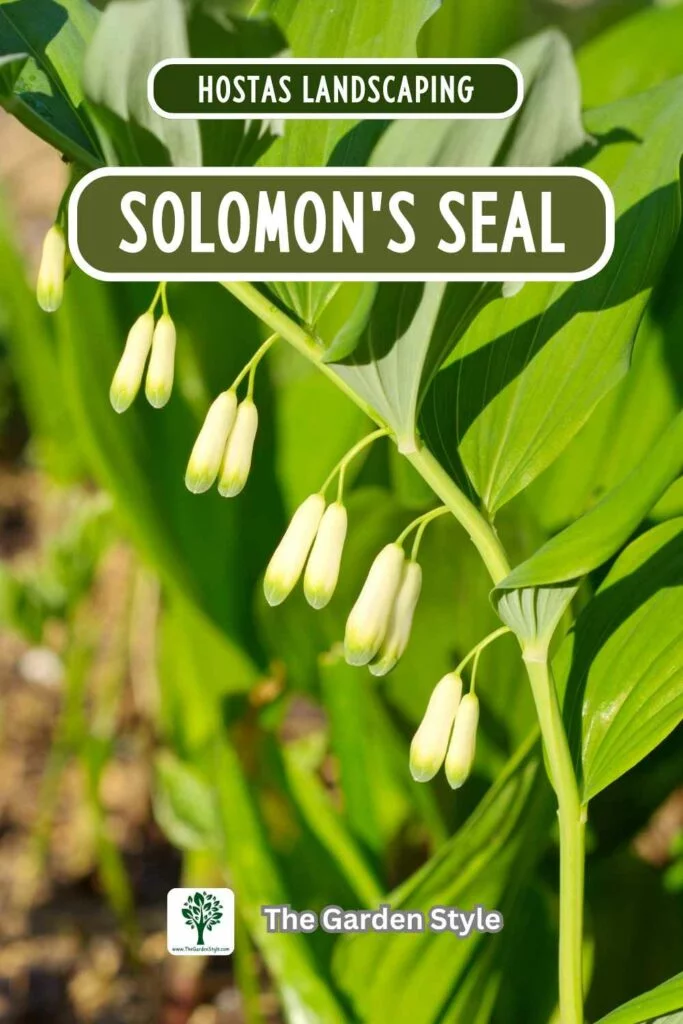
Solomon’s seal has arching stems with dangling, bell-shaped flowers and attractive foliage. It grows well in the shade and pairs nicely with hostas, adding elegance and grace to the garden.
- Plant Type: Perennial
- Preferred Location: Partial to full shade, in-ground
- Watering Needs: Keep soil consistently moist, especially during hot and dry periods.
- Expected Blooming: Late spring to early summer
- Suggested USDA Hardiness Zones: 3-8
Sweet Woodruff (Galium odoratum)
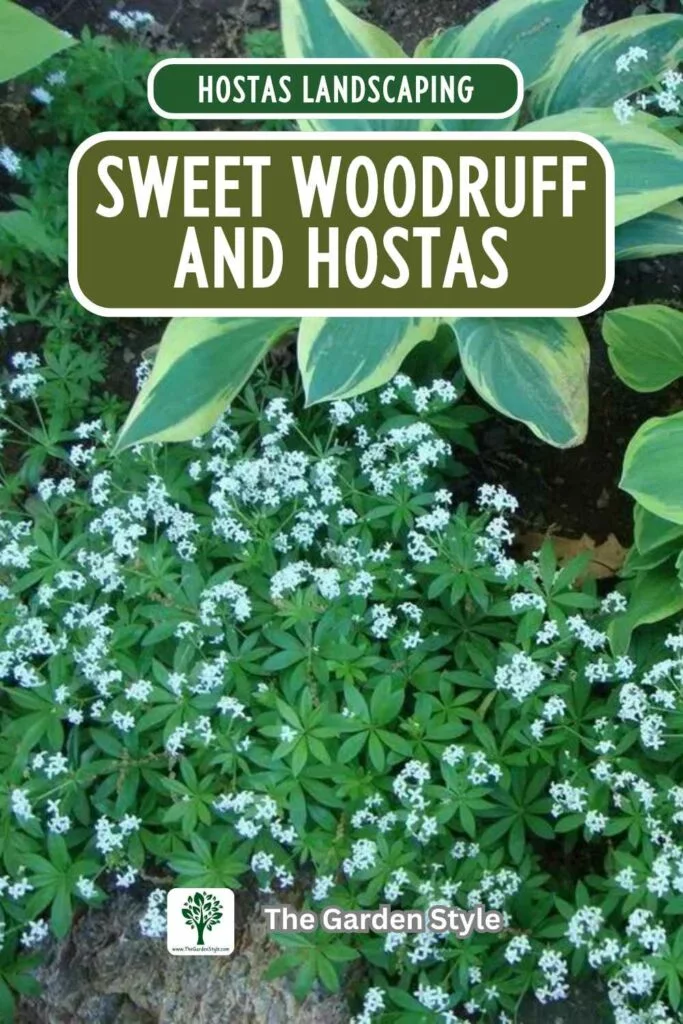
Sweet woodruff is a low-growing ground cover with fragrant, whorled leaves and clusters of white flowers. It spreads slowly to fill in spaces beneath hostas and adds a charming woodland touch to the garden. Take a look at these remarkable Sweet woodruff seeds.
- Plant Type: Perennial
- Preferred Location: Partial to full shade, in-ground
- Watering Needs: Keep soil consistently moist, especially during hot and dry periods.
- Expected Blooming: Spring to early summer
- Suggested USDA Hardiness Zones: 4-8
Tiarella (Foamflower)
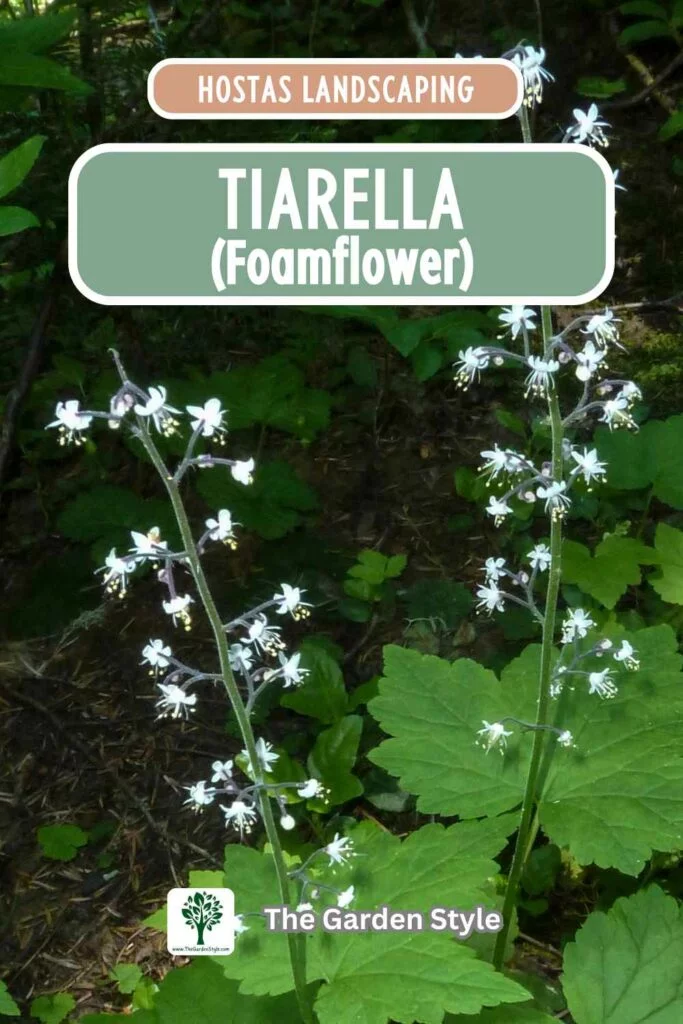
Foamflowers produce airy spikes of small flowers in shades of white, pink, or lavender, adding delicate blooms to the shady garden. Their foliage complements the broad leaves of hostas and creates a harmonious planting combination. Explore these incredible Tiarella plants.
- Plant Type: Perennial
- Preferred Location: Partial to full shade, in-ground or containers
- Watering Needs: Keep soil consistently moist, especially during hot and dry periods.
- Expected Blooming: Spring to early summer
- Suggested USDA Hardiness Zones: 3-9
Recommended reading: +10 Shade Annuals: Plants and Flowers for a Stunning Garden
Feel free to share this pin with friends and family so that everyone can cultivate their own thriving hosta garden.
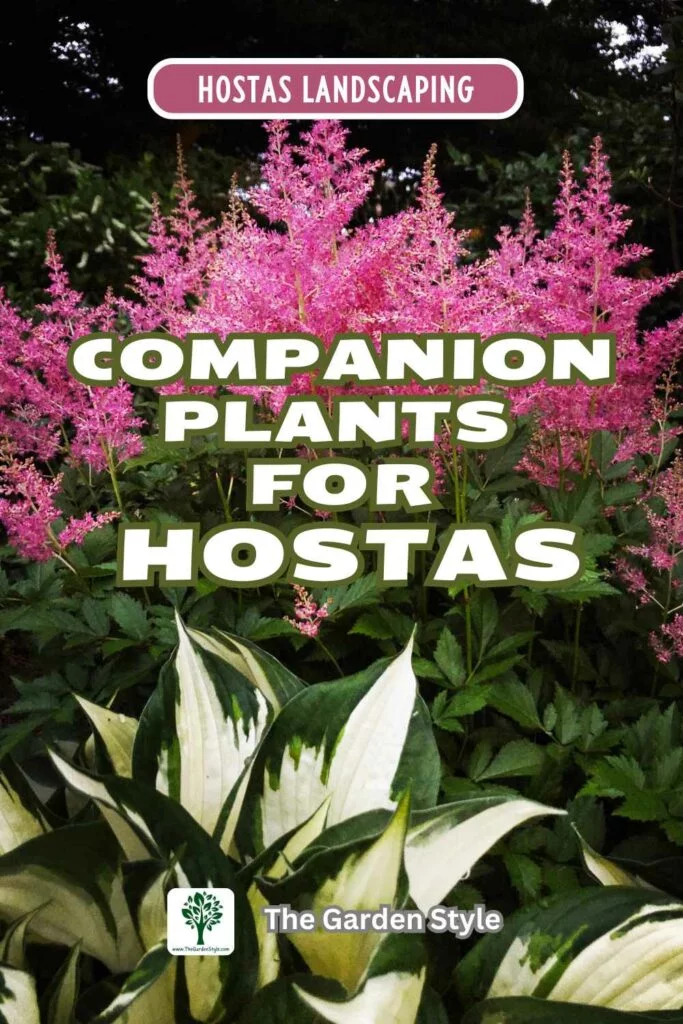
Final Thoughts About Creating a Thriving Hosta Garden with the Best Companion Plants for Hostas
In the world of gardening, beauty lies not just in the individual plants but also in their harmonious relationships.
Our comprehensive list provides a variety of companion plants that thrive in shady conditions alongside hostas, offering a range of textures, colors, and blooming times to enhance your garden.
By carefully selecting companion plants for your hostas, you can create a garden that is not only visually stunning but also teeming with life and vitality. So, as you plan your garden, remember to consider the perfect pairings that will bring out the best in your hostas and enrich your outdoor sanctuary with abundance and joy.

